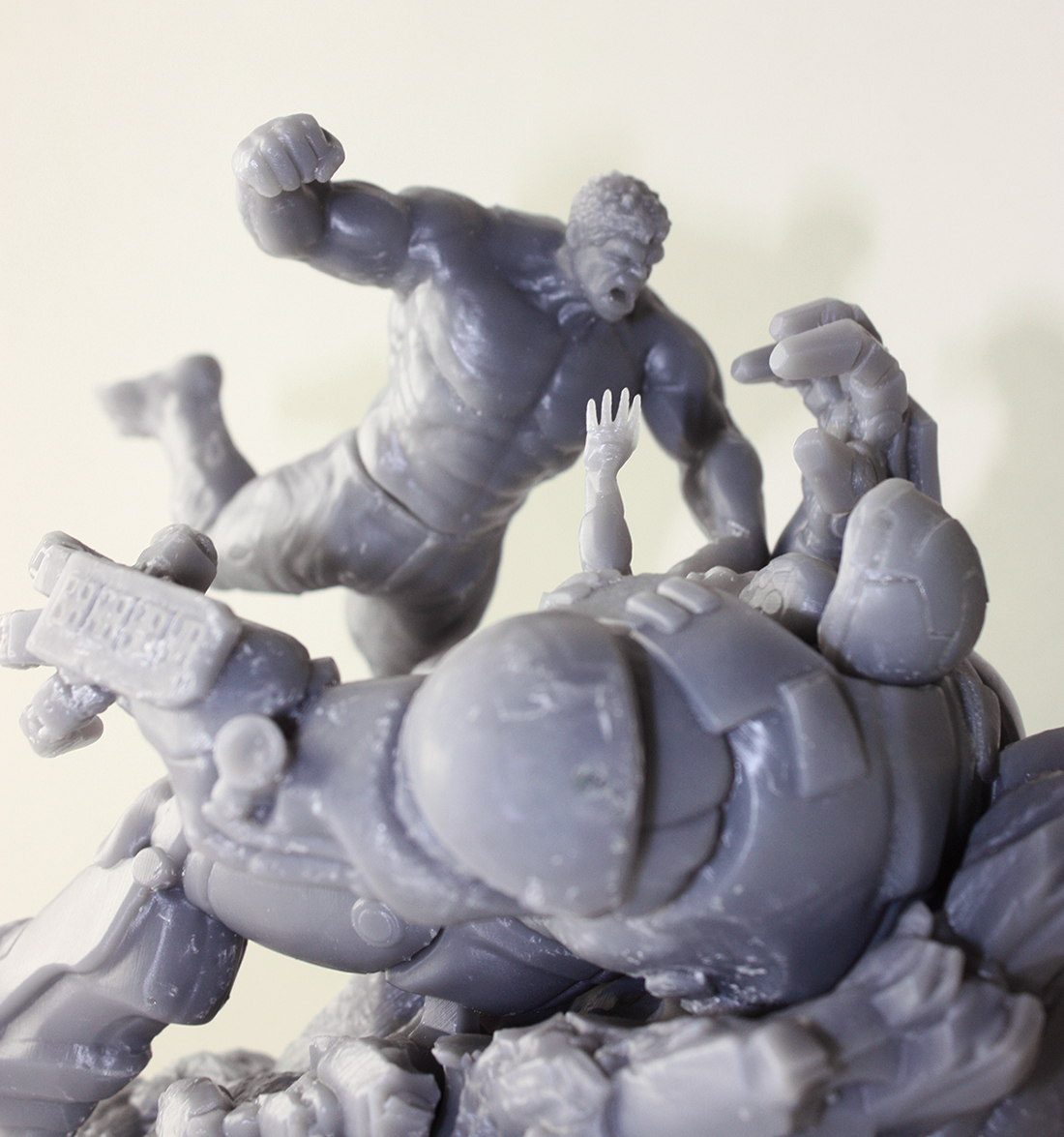There are several options when it comes to additive, or 3D printing parts. Most are used for prototypes but in some cases, true production components are achievable.
Generally there are two primary decision drivers: Cosmetics or Function. There is lots of noise out there arguing particular processes and technologies can do both, but in most cases, it’s one or the other.

For simplicity’s sake, we’ll start with function.
SLS
A good option for production or end use parts requiring chemical or heat resistance. These applications can include automotive, under the hood, production line fixtures, functional brackets, outdoor components, etc. Parts printed in SLS utilize different variations of nylon starting in a powdered form and the part is fused, or melted one layer at a time.
FDM
The best option when ABS or PC is needed for the end part. This process resembles a tiny ‘hot glue gun’ that extrudes real plastic through a small nozzle one layer at a time, with each fusion to the previous layer. Situations where FDM is best include material specification testing, chemical reaction testing for ABS and PC, and prototypes of baskets, holders, brackets, bezels, etc.
MJF
Another process that prints in production material similar to that used for injection molding. Nylon for high heat, rigid prototypes, end use pieces that fit in the palm of your hand, and can cost effectively 3D print multiple variations of the same geometry.
Next, let’s review the 3D printing options that are best when cosmetics are of most importance.
SLA
A great option for full scale visual models, painted mock ups, and table top displays that need to be somewhat functional. SLA 3D printed parts can be utilized in prototype devices, automotive displays, cosmetic tools, clear parts and fit check projects. The cured resin of a printed SLA is ideal to sand and make smooth for paint prep, primer prep, and for master patterns in casting or molding.
PolyJet
A good option when ‘rubber like’ parts are needed for semi functional fit tests with gaskets, buttons, cups, or seals. The material easily tears when put under pressure or stretched but it is a good alternative to molding real gaskets if only a fit test is needed. Hard materials offered by PolyJet have similar capabilities as SLA parts and usually can be interchanged.
CJP
The cosmetic winner, and if anything, the functional loser. The parts are printed using real inkjet cartridges to infuse color into a thin layer throughout the part surface and from a distance; the 3D printed parts are indistinguishable from the real thing. Just don’t drop it and expect the part not to break when it hits the floor. CJP parts are great for architectural and concept models, and can print in brilliant color and detail without requiring an artist’s touch.
To summarize this very brief overview, your options for functional 3D printed parts include SLS, FDM & MJF. For projects calling for more visually pleasing parts, you’re better off with SLA, PolyJet and CJP.

About the Author: Bill Artley is the Vice President of Operations at PrintForm and has written many articles & white papers on product development, sourcing, additive manufacturing, and materials. He is a contributing author and peer reviewer of The 3D Handbook (http://a.co/h9fL1b5), a top 10 Amazon Best Seller in its category.





